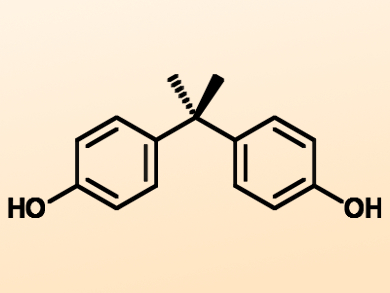Bisphenol A (BPA, pictured) is used in the production of, e.g., polymers and the thermal paper used for receipts. There are health concerns regarding the compound because it has hormone-like properties. The pharmacokinetics of BPA after exposure from food or drink are well understood. The compound is converted to nontoxic metabolites in the body and eliminated fairly quickly. The pharmacokinetics for other exposure pathways, such as dermal exposure from touching thermal paper, are not clear.
Jiaying Liu, University of Alberta, Edmonton, Canada, and Jonathan W. Martin, University of Alberta and Stockholm University, Sweden, have compared the pharmacokinetics of BPA after dietary and dermal exposure. The team exposed six healthy male study participants to deuterated BPA (BPA-d16), either via food or by touching a simulated thermal paper receipt. They then collected urine at regular intervals. The excreted amount of BPA-d16 was measured using solid phase extraction (SPE), coupled with high-performance liquid chromatography (HPLC) and mass spectrometry (MS).
The researchers found that after dietary exposure, the BPA levels spiked after five hours and the compound was eliminated from the body within 24 hours. After dermal exposure, in contrast, the levels of excreted BPA increased for two days and remained detectable for one week in half of the participants. According to the team, this prolonged exposure after dermal absorption of BPA compared with dietary uptake could lead to higher amounts of BPA in systemic circulation and an accumulation of the compound in the body.
- Prolonged Exposure to Bisphenol A from Single Dermal Contact Events,
Jiaying Liu, Jonathan W. Martin,
Environ. Sci. Technol. 2017.
DOI: 10.1021/acs.est.7b03093




